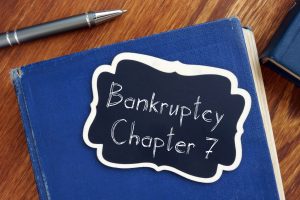Michael Sheridan shares below common myths surrounding bankruptcy. In this insightful article, he touches on what often leads people to filing for bankruptcy and why it is not always a bad thing.
What are common misconceptions you find that clients have towards bankruptcy?
Most of the common misconceptions - such as ‘you will lose your home, your car and all of your assets’ and ‘your credit will be destroyed for years’ – stem from the myth that the bankruptcy laws are somehow designed to punish debtors (i.e., people filing for bankruptcy) who are exercising their bankruptcy rights. The logic, I suppose, is that the court will remove your debts, but as a punishment, the court will take all of your large assets and destroy your credit, so you are not tempted to file for bankruptcy protection in the future.
Most people are surprised to learn how generous the asset protections are in bankruptcy.
This myth is completely antithetical to the true goal of the bankruptcy laws: to give the honest debtor a fresh start. A fresh start is removing the legal obligation to pay most unsecured debts (credit cards, loans, lines of credit, etc) and even tax debts if certain criteria are met, and permitting the filer to keep most, if not all, of their assets so they can provide for themselves and their families. Most people are surprised to learn how generous the asset protections are in bankruptcy.
For example, in Minnesota, we can protect up to $395,000 of equity in your home. That’s equity – the value over and above the balance of your mortgage. I estimate that for 98% of our clients, Atlas Law Firm is able to protect all of the clients’ assets.
Most of the common misconceptions - such as ‘you will lose your home, your car and all of your assets’ and ‘your credit will be destroyed for years’ – stem from the myth that the bankruptcy laws are somehow designed to punish debtors
Regarding the misconception that bankruptcy destroys your credit, that perception entirely disregards the positive affect bankruptcy can have on your credit score. While the exact formula used to calculate credit score is a closely-held secret, we do know that two of the biggest factors for determining your credit score are late payments (35% of your credit score) and debt-to-income ratio (30% of your credit score). On the date your bankruptcy is filed, the chapter of bankruptcy and the date of filing are listed in each of the tradelines in the account history section of your credit report. Because the credit score is using information from the account history section, the bankruptcy affects your credit score during that first month. However, the lower your credit score is on the date your case is filed, the less the bankruptcy will affect the score.
For example, if your credit score was near 630, we would not expect your credit score to decrease more than 15-20 points. The positive effect is that because on the date your bankruptcy is filed, regardless of whether it was a chapter 7, chapter 13 or any other chapter, a court order called an ‘automatic stay’ goes into effect immediately. The automatic stay prohibits any collection action from any of your creditors (with a narrow set of exceptions). This prohibition includes negatively reporting the accounts on your credit report. The negative credit reporting that has been an anchor on your credit score stops on the date your case is filed, so that you can begin rebuilding your credit.
People tend to make a fundamental attribution error that when something negative happens to people – like being in overwhelming debt – that the cause is due to the person’s internal characteristics.
Over your years of practice, can you share common trends that often lead towards bankruptcy? How do you advise clients in order for them to best prevent such fate?
There is a persistent myth that only spendthrifts or reckless spenders file for bankruptcy protection. I can tell you after meeting with thousands of people and discussing their circumstances with them, most people who file for bankruptcy protection are people who have used debt responsibly and have made their payments over the years, and then one of three things happens: unemployment or underemployment, divorce or medical debt. Once one of those triggers happens, it sends people into a financial free fall.
You’re forced to choose between paying necessary living expenses and paying down the debt. Trying to pay the debt, most people find themselves in the ‘credit card cycle.’ They use their income to pay their monthly credit card bills and then there is not enough income left over to pay living expenses. So, the living expenses are purchased with credit cards . . . and the balances grows.
Eventually the required credit card payments become too high to pay all of the credit cards and the collections process begins. You will notice that the three triggers are all external factors: losing a job, getting your hours cut, being diagnosed with a medical condition. These are all things that happen to people, they are not characteristics of people.
An emergency fund can help you address unforeseen expenses that commonly cause people to turn to credit cards.
People tend to make a fundamental attribution error that when something negative happens to people – like being in overwhelming debt – that the cause is due to the person’s internal characteristics. The fact of the matter is, life happens, and the bankruptcy laws are there to ensure people can get back on their feet and be able to provide for themselves, their families and their communities.
The best way to avoid a financial free fall is to build a savings safety net. An emergency fund can help you address unforeseen expenses that commonly cause people to turn to credit cards. It’s easier said than done, but setting aside a small amount of each pay check and having the discipline to only use it when truly needed is the best way to prevent exercising a debt relief option.
Clients can begin rebuilding their credit if they keep any debts through bankruptcy, such as a mortgage or a car loan.
When is bankruptcy the best option?
Bankruptcy is the best option when your income is not sufficient to pay your monthly debt payments and your monthly living expenses. If you’re running your household on a negative budget, other debt relief options such as credit counselling and debt settlement likely will not work. Bankruptcy is also the best option when you need debt relief quickly – such as when a creditor has obtained a judgment against you and will begin garnishing your pay check or when foreclosure is imminent and you need to power of the bankruptcy court to order a stay of the foreclosure of your home while you exercise your rights to lengthen the mortgage cure payments over five years.
How can clients recover, post filing for bankruptcy?
Clients can begin rebuilding their credit if they keep any debts through bankruptcy, such as a mortgage or a car loan. If they do not have a secured debt that they wish to keep after the bankruptcy, many clients are surprised to learn that they likely will get credit card offers within weeks of filing their bankruptcy case. The credit cards will be high interest rates, but can be used to make small purchases (e.g., small grocery trip or the phone bill) and pay the balance in full on time each month. Because the negative credit reporting has stopped, any positive credit reporting rapidly increases the credit score. We find that many of our clients have rebuilt their credit to a higher score than before their case within 12-18 months of case filing. How rapid and how high this is depends on whether they have a debt in their name after the bankruptcy that they continue to pay on time each month. Many clients qualify for good interest rates on auto loans within one year of their bankruptcy case and qualification for a conventional home mortgage is typically three to five years. However, home mortgages can be obtained after one year if the client qualifies for particular programmes.
Michael J. Sheridan
Atlas Law Firm, LLC
2006 First Avenue N., Suite 206, Anoka, MN 55303
O: 952-373-5455 | F: 763-400-4530
After working at different law firms and finding the focus of those law firms to be on billable hours rather than legal representation, Michael Sheridan founded Atlas Law Firm in 2012 after leading the bankruptcy and debt restructuring department of a downtown Minneapolis law firm. Atlas Law Firm was founded to deliver legal representation to business and individuals in need of debt relief with a focus on excellent client service. All too often in the early years of his legal career, working at one of the largest bankruptcy firms in Minneapolis/ St. Paul, Minnesota, did Michael find that his contemporaries did not listen to their clients’ questions and concerns and instead talked past them providing basic legal information. Seeing busy lawyers delegate tasks and communications to assistants and paralegals because they were too busy to pick up the phone or write an email, Michael wanted to start a firm that offered the level of service he would expect should he need to hire a lawyer. The approach has been appreciated by the clients of Atlas Law Firm as it is one of the highest rated firms by its clients. Atlas Law Firm embraces the ‘client first’ approach and always takes time to carefully listen to its clients’ concerns and ensure they have all of the information they need to make an informed decision as to their debt relief options.




















